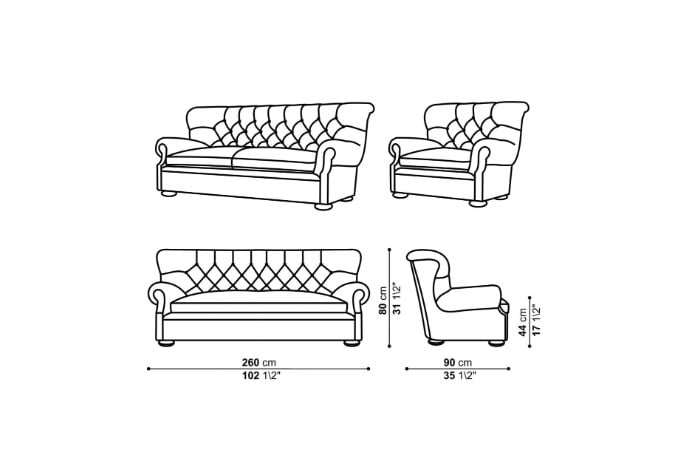Bespoke 3D Furniture Modelling
TOP 5 References To Include In A Brief
Bespoke 3D furniture modelling is a surefire way to get awe-inspiring product images that will win the hearts of prospects. It not only helps to visualize Manufacturers’ ideas but successfully promote new furniture on the market.
A bespoke furniture company is tired of the long organizational process of photo shoots for every marketing campaign. It takes so much time and efforts that sticking to tight deadlines is almost impossible. Moreover, product photography becomes more expansive with each year and soon the budget will cross all possible limits for Manufacturers. The furniture company wants to try CGI everyone is talking about but they don’t know where to start and what to do in order to get the desired result. What materials do they need to send to a 3D modelling studio so that CG furniture on pictures would look exactly like in real life?
Through years of experience in the 3D field and tons of modelling done, we are pretty sure that formula of a perfect brief for a CG project exists. Learn following TOP 5 reference materials for a bespoke furniture modelling task and get the photorealistic pictures faster than ever.
#1. Drawings

CAD drawings are the basic references for any bespoke 3D furniture modelling projects as they give all technical information about a product. Even more so, they are absolutely indispensable when it comes to custom furniture that has only existed as an idea before. Drafts are often used as a guide for developing product design and then sent to 3D modelling artists to create truly mind-blowing images. All of it possible even before the manufacturing process begins. The most suitable CAD drawings for a bespoke furniture project brief are shop and millwork drafts as well as wireframe model drawings.
#2. General Image
Talking about bespoke 3D furniture modelling always starts with a concept. Manufacturers usually have just a CAD drawing or a hand sketch but they can also provide a product prototype which will be the most accurate reference of all. However, it’s not obligatorily – a picture of furniture, a simple general view in one shot and without cropping is more than enough for a product design 3D modelling project. Front, side and back views will give the better idea of proportions and form of bespoke furniture, as well as add more dimension and detail to a 2D drawing.
#3. Description of Details
3D furniture modelling artists know that every product has its own special features. Something that highlights an item amongst many others on the market and makes it more attractive in prospects’ eyes. It’s only natural for a Manufacturer to want to show all the outstanding benefits of bespoke furniture in every detail. However, some hidden features can be not so obvious for a 3D Artist unless a Manufacturer points out them. Sharing close up photos, drawings and even descriptions of special details will help the team of 3D modelling artists to build the composition of images in a way that will demonstrate the features thoroughly. Moreover, in the case of 3D furniture animation, Manufacturers should include in a brief the explanations of furniture functions and the scenario of how to showcase them.
#4. Material Swatches

Not only the shape but materials could make bespoke furniture shine like a star in the marketing materials. Hardwood or velvet, tinted glass or brushed steel – these words describe thousands of possible colors and various tones. The team of 3D modelling artists never knows what kind of veneer a Designer chose unless they see the reference of it. Would it be slip match or book match, matt or glossy – without visual directions the team of 3D Artists will be just guessing. So half of the success depends on providing pictures with material examples. It can be small sample pieces, images with material applied to other products, link to selected finishes, etc.
#5. Mood References
The last stage of a bespoke 3D furniture modelling is rendering for which 3D Artists need references as well. Every Manufacturer has his own style, concept or a mood he goes for. Some Furniture Designers prefer to shoot their products on pure white background, isolated from any other distracting details – an item is the absolute center of the composition. Others are fond of representing furniture in a lifestyle setting like a stylish interior. Highlighting functionality and ergonomy, warm or cold lighting, with or without accessories, showroom or real room – it’s important to discuss all these aspects with 3D modelling artists. For this purpose, references can be some mood boards from Pinterest or example from furniture catalogs, etc.
Bespoke 3D furniture modelling projects require carefully selected references for a brief in order to showcase an image concept in the clearest way. It helps to reach an understanding with 3D modelling artists and ensure that they get Manufacturers’ ideas. Our article will help to choose the best references for every aspect of the furniture modelling process. As a result, Manufactures get not only visuals they’d imagined but also the smooth and fast collaboration in general.
Want to implement your ideas of bespoke furniture design accurately? Use 3D modelling services of our company and get game-changing product images for promotion.






Leave a Reply
Want to join the discussion?Feel free to contribute!